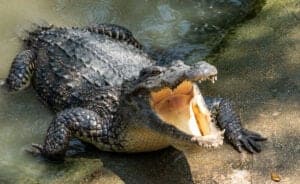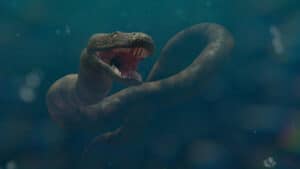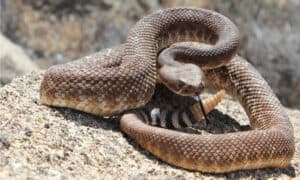What is the Deadliest Snake Slithering Around England Today?
England‘s climate isn’t great for cold-blooded animals. They have about eight native lizard and snake species, plus a few amphibians.
There are only three native snakes — the barred grass snake, the smooth snake, and the venomous common adder. The common adder is England’s only venomous snake, making it the deadliest snake in England.
These snakes have distinctive zigzag markings down their spine, somewhat heavy bodies, and keeled scales. Adders grow to about 35 inches long. Females tend to be browner and most black (melanistic) adders are female. Like most vipers, they also have hinged fangs and give birth to live young.
Common Adders are widespread across Europe and the only snake known to live above the Arctic Circle! They’re widespread across Europe, not just England.
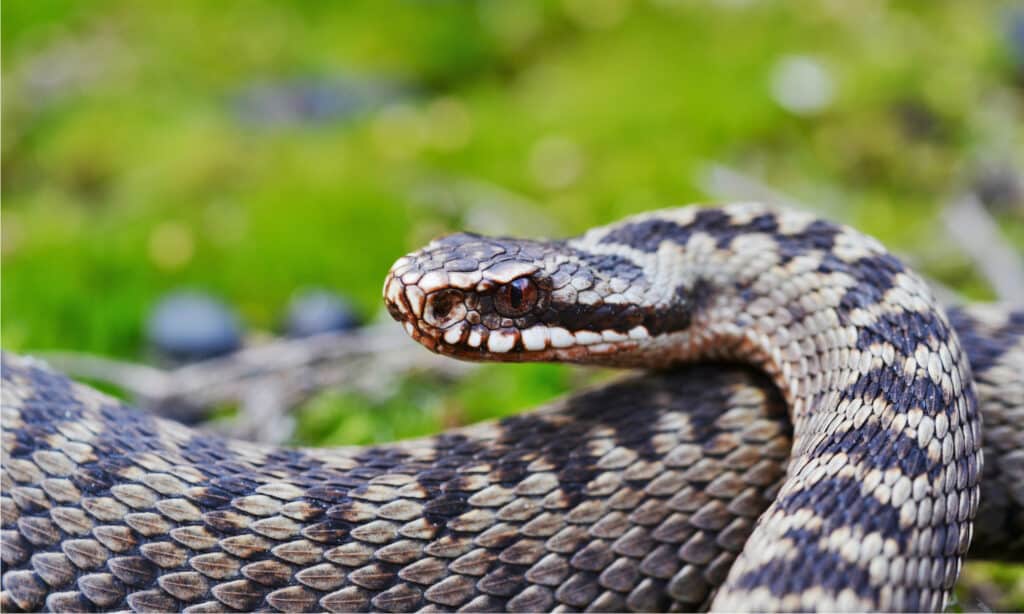
The common European adder (Vipera berus) is the only venomous snake native to England.
©Holm94/Shutterstock.com
How Dangerous Are Common Adders?
Adders aren’t aggressive. Most bites happen because someone (human or animal) stepped on, picked up, or harassed them. According to The Wildlife Trusts, they’re typically shy and relatively calm.
Although adders are venomous, they don’t have the worst venom. Its toxicity is pretty low compared to other viper species, and the venom yield is pretty low. Most people survive bites with little to no long-term effects — between 1876 and 2005, there were only 14 known fatalities.
On the other hand, children and pets aren’t always as fortunate when an adder bites them.
Adder bites have killed a few children. Their smaller body mass makes them more susceptible to the damage it causes. However, most fatalities in recent history have been pets and livestock, especially dogs. Our loyal furry friends are curious and explore the world through their sense of smell — making them more vulnerable than animals that paw at things before they stick their noses into them.
Why Doesn’t England Have More Snakes?
If you’re looking for dangerous snakes in England, you won’t find many. The English Channel separates the small country from the mainland. The water is cold — too cold for snakes to traverse.
At the end of the last ice age, the glaciers began receding, revealing landscapes hidden for thousands of years. Then around 6,000 years ago, the British Isles were there, cut off from the European continent. The areas further north and west were too cold for snakes, explaining why Ireland has none. Any snakes already on the islands couldn’t leave, nor could any more snakes colonize them.
Other Snakes Slithering Around England
Snakes aren’t common in England because of the country’s weather. However, there are a couple more species — two native and one invasive:
Barred Grass Snake (Natrix helvetica)
The most common snake spotted in England is the barred grass snake. These snakes are semiaquatic and feed primarily on amphibians like the common toad and frog. However, they sometimes eat fish, eat ants, and their larvae.
Barred grass snakes are common throughout most of Great Britain and grow up to 35 inches long.
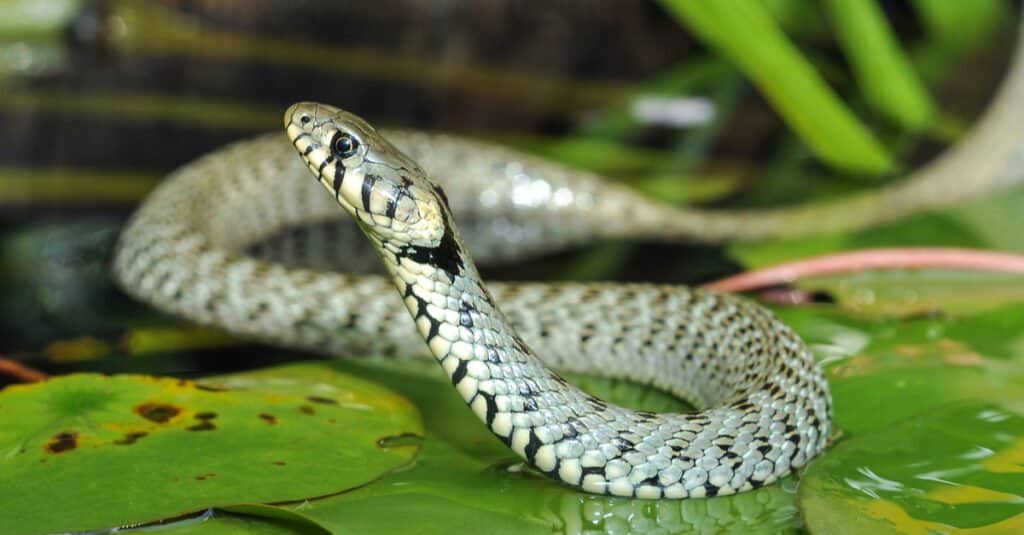
Snakes require an external heat source to power their metabolism.
©Dr.Pixel/Shutterstock.com
Smooth Snake (Coronella austriaca)
This species is rare in England. Smooth snakes are only found in a few places in sandy heathland in England. They’re reclusive and only active from May to August or September while it’s warm enough.
Smooth snakes look similar to adders but aren’t venomous and don’t have zigzag markings. These snakes grow to about 28 inches long and give live birth in September.
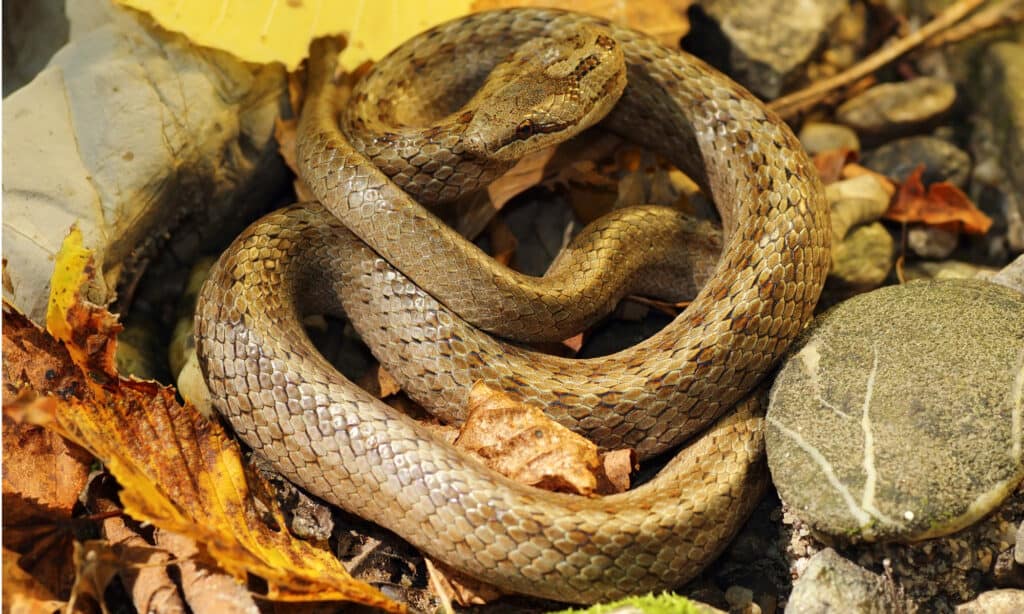
As their name indicates, smooth snakes have smooth skin.
©iStock.com/taviphoto
Aesculapian Rat Snake (Zamenis longissimus)
One of several introduced reptile and amphibian species in England, the Aesculapian Snake is the biggest in Great Britain. It grows over six feet long and is an excellent climber. Unlike other snakes in the U.K., aesculapian snakes are often found in bushes and trees.
They’ve had a few breeding populations in England for at least 35 years. However, they were once native — at least 20,000 years ago. Yet, even though they’re no longer native and could be invasive, they feed on rats, a plentiful food source. So, they’re probably helping the environment out instead of damaging it.
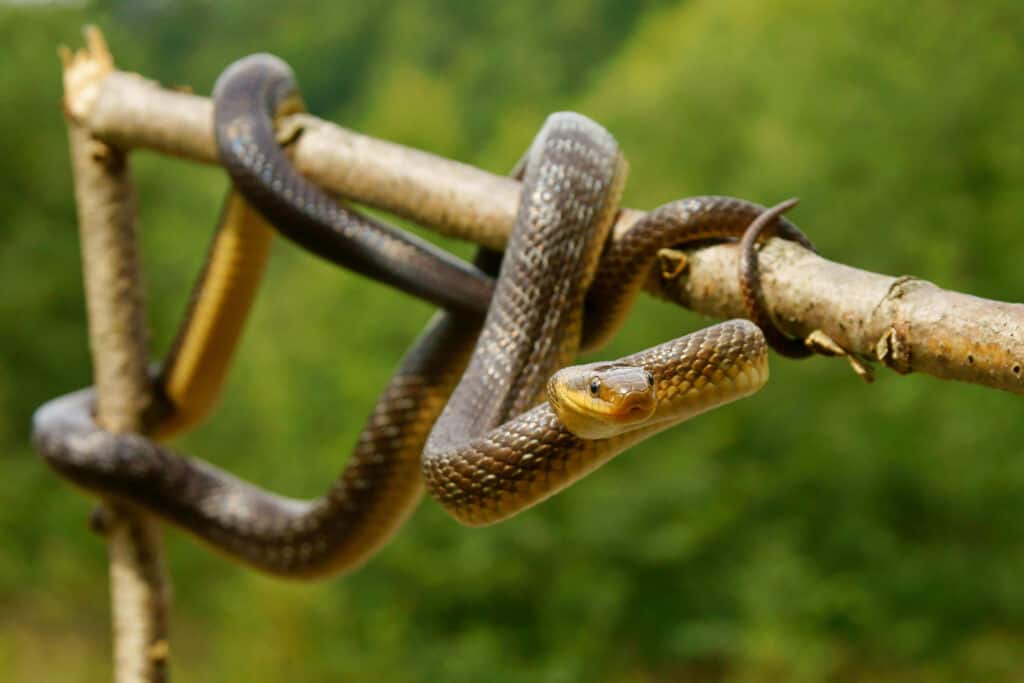
Aesculapian Snake (Zamenis longissimus) was native to England over 20,000 years ago, but is now introduced in a couple of populations.
©iStock.com/SzymonBartosz
Slow Worm (Anguis fragilis)
While not technically a snake, slow worms look like snakes. So, in the list, it goes!
Slow worms are legless lizards. They are smooth and glossy with brown or gray coloration. One of the easy ways to tell it’s a lizard is that it has eyelids and sheds its tail to avoid a predator. Of course, just like other lizard tails, slow worm tails keep right one wiggling for a minute.
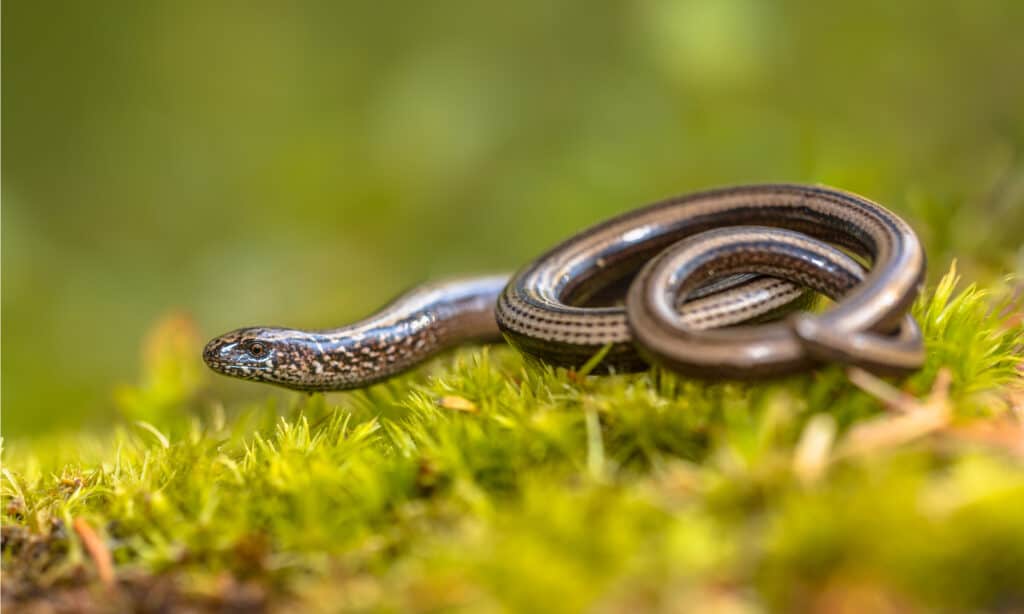
Slow Worms are legless lizards — they have eyelids and their tail detaches to distract predators.
©Rudmer Zwerver/Shutterstock.com
The photo featured at the top of this post is © /Shutterstock.com
Discover the "Monster" Snake 5X Bigger than an Anaconda
Every day A-Z Animals sends out some of the most incredible facts in the world from our free newsletter. Want to discover the 10 most beautiful snakes in the world, a "snake island" where you're never more than 3 feet from danger, or a "monster" snake 5X larger than an anaconda? Then sign up right now and you'll start receiving our daily newsletter absolutely free.
Thank you for reading! Have some feedback for us? Contact the AZ Animals editorial team.



